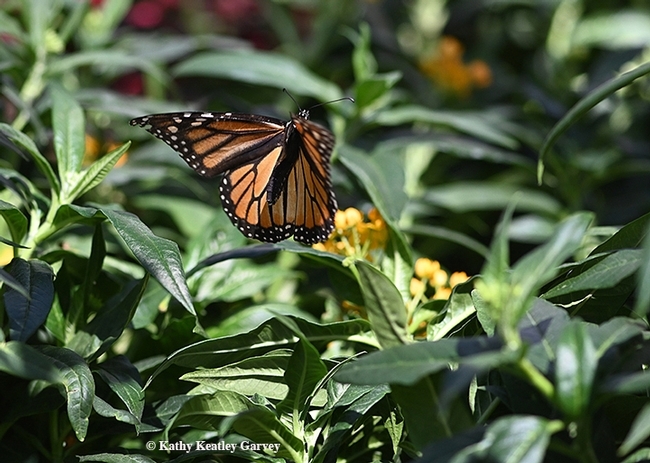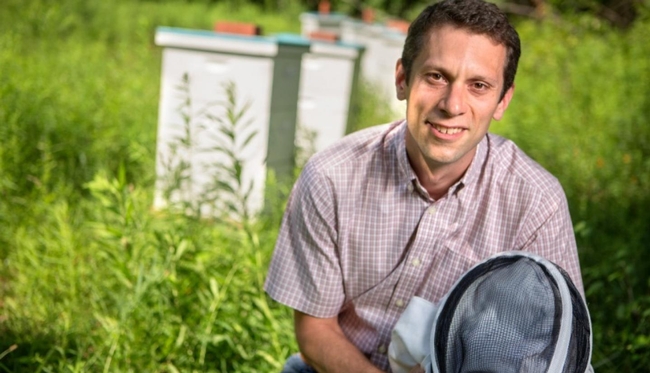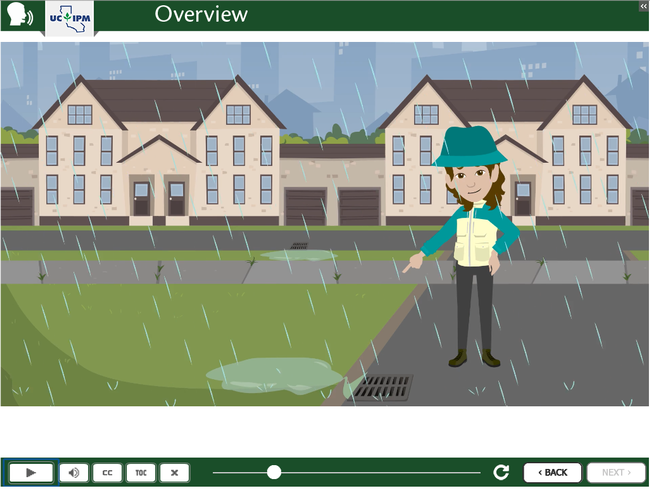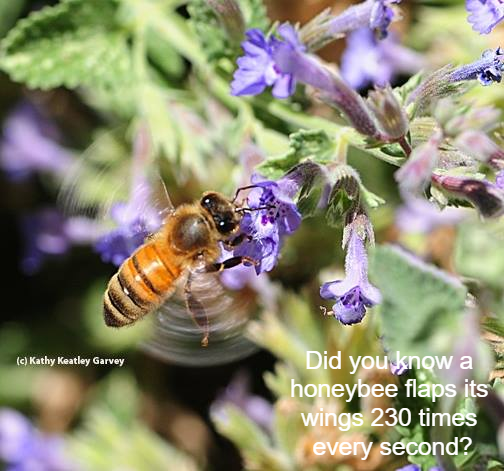
Posts Tagged: pesticides
New online pesticide-use course aims to protect water quality
Do you know that some pesticides used around homes and other structures are toxic to small aquatic organisms living in nearby streams, creeks, rivers and oceans? The UC Statewide Integrated Pest Management Program has launched a new online course on runoff and surface water protection in California. This course is designed for pest management professionals working primarily in structural pest control or landscape maintenance, but residents and property managers may also find the presented information useful.
Developed by pest management experts from the California Department of Pesticide Regulation (DPR) and the University of California, this course presents information on the Surface Water Protection Regulations that are found in Title 3 of the California Code of Regulations. These regulations were put into place to prevent pesticide runoff into California waterways and to reduce surface water contamination from pyrethroid insecticide use.
In this course, you will learn about the types of pesticide applications that are allowed under the regulations, as well as application types that are prohibited and also application types that are exempt. The course takes a close look at pyrethroids, particularly bifenthrin because of its high use in urban areas, high detection in surface waters, and high toxicity to aquatic organisms. Fipronil, another commonly used ingredient in structural and landscape products, is addressed in the course as well because it causes similar water-quality concerns as pyrethroids. Bifenthrin is used for managing pests such as ants, crickets and lawn grubs. Fipronil is used for ants, roaches and termites.
The Urban Pyrethroid and Fipronil Use: Runoff and Surface Water Protection course has been approved by DPR for a total of 1.5 continuing education units, including 0.5 hour of Pesticide Laws and Regulations and 1.0 hour of Other and by the Structural Pest Control Board for 1.5 hours of Rules and Regulations.
The course takes about 90 minutes to complete. It is divided up into seven sections so a person can stop and resume where they left off. The course is free. To take the course, people need to set up an account at https://campus.extension.org/ then they can enroll. The direct link to the course is https://campus.extension.org/course/view.php?id=2221.
UC IPM currently offers 22 online courses with continuing education units from DPR. Many of these courses are also credited by the California Structural Pest Control Board, Certified Crop Adviser, the Western Chapter of the International Society of Arboriculture, and the Arizona Department of Agriculture.
That Milkweed You Buy at Retail Nurseries May Contain Pesticides
It's Sept. 4, 2019. We notice a monarch butterfly laying eggs on milkweed in an enclosed Vacaville retail nursery. We purchase the plant and add it to our pollinator garden. Did the eggs ever hatch? Did we ever get caterpillars, chrysalids and adults? No. Zero. Zilch. Nada. Why?...

A monarch laying eggs in a Vacaville retail nursery on Sept. 4, 2019. (Photo by Kathy Keatley Garvey)
New WSSA Backgrounder clarifies purpose and use of plant-back intervals
A press release from the Weed Science Society of America (WSSA) website :: June 27, 2022 New WSSA Backgrounder Clarifies Purpose and Use of Plant-Back Intervals Posted on June 27, 2022 WESTMINSTER, Colorado – June 27, 2022 – Plant-back intervals are a critical...
Scott McArt: The Risk of Pesticides to Pollinators
"The use of synthetic chemical pesticides is central to current agricultural practices worldwide. But what is the cost to wildlife via non-target exposures? This talk will summarize when there's risk to bees, when there isn't, and what types of research are most likely to influence farmers,...

Scott McArt of Cornell will speak on "Pesticide Risk to Pollinators: What We Know and What We Need to Know Better" at the Wednesday, May 4 virtual seminar hosted by the UC Davis Department of Entomology and Nematology.
National Honey Bee Day: August 18, 2018
National Honey Bee Day - Aug. 18, 2018: Brush up on your knowledge of bee protection
Author: Stephanie Parreira
Celebrate National Honey Bee Day by brushing up on your knowledge of bee protection—check out the newly revised Best Management Practices to Protect Bees from Pesticides and Bee Precaution Pesticide Ratings from UC IPM. These resources will help you strike the right balance between applying pesticides to protect crops and reducing the risk of harming our most important pollinators.
The best management practices now contain important information regarding the use of adjuvants and tank mixes, preventing the movement of pesticide-contaminated dust, and adjusting chemigation practices to reduce bee exposure to pesticide-contaminated water. The Bee Precaution Pesticide Ratings have also been updated to include ratings for 38 new pesticides, including insecticides (baits, mixtures, and biological active ingredients), molluscicides (for snail and slug control), and fungicides.
Most tree and row crops are finished blooming by now, but it is a good idea to learn about bee protection year-round. Visit these resources today to choose pesticides that are least toxic to bees and learn how you can help prevent bees from being harmed by pesticide applications.




